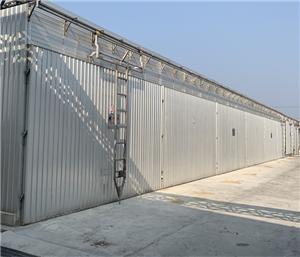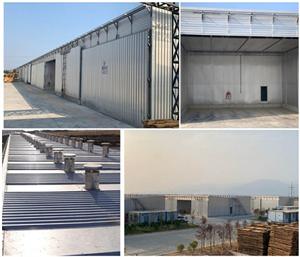Wood and Moisture - State of Moisture in Wood

In a living tree, its fibrous roots continuously transport water from the soil through the trunk to the leaves, so the trunk contains a lot of water. After the living tree is felled and sawn into various specifications of sawn timber, some or most of the moisture remains inside the timber, which is the origin of the moisture in the timber. Boards and squares made from freshly felled trees are called green timber.
Wood can be divided into 6 grades according to the degree of dryness and humidity:
Wet wood: wood that has been placed in water for a long time and has a moisture content greater than that of raw wood;
Green wood: wood with the same moisture content as freshly felled wood;
Semi-dry wood: wood with a moisture content lower than that of green wood;
Air-dried wood: wood that has been dried in the atmosphere for a long time and basically stops evaporating water; the moisture content of this kind of wood varies from 8 to 18% due to the different dry and wet conditions of the climate in various places;
Kiln-dried wood: wood with a moisture content of about 7-15% after kiln-drying treatment;
Full dry wood: wood with a moisture content equal to 0.
Wood is composed of a very large number of various cells. Every cell has a cell wall and a cell cavity. The pits on the cell wall and the perforations at the ends of the ducts make the lumens of most cells communicate with each other in parallel or in series, forming a large capillary system. The main component of the cell wall is cellulose, followed by hemicellulose and lignin. There are extremely fine gaps between the cellulose chains, basic filaments, microfibrils, and fibrils that make up the cell wall. They communicate with each other to form a multi-level microcapillary system. The moisture in wood is contained in these two types of capillary systems, and can move vertically and horizontally along the pathways of the system. The large capillaries composed of cell lumen and pits have little binding force to water, and the evaporation of water is relatively easy. Therefore, the water in the large capillary system is called free water. The lumen cannot absorb moisture from the air. If the wood is not soaked in rivers and ponds, its free water content will not increase, but will only decrease due to evaporation to the outside. The microcapillary system at all levels in the cell wall has the ability to absorb moisture from the air (ie, hygroscopicity). The moisture in the microcapillary system is called adsorbed water. Changes in absorbed water affect changes in wood volume and dimensions; reductions in free water only affect wood weight.
100 workers, 10000㎡ workshop, more than 20 years experience, ISO9001,CE certificated, two hour reach Xiamen port, this is how we keep superior quality and competitive offers for global valued customers.
Our main products cover Aluminium alloy Drying Kilns,Track Type Veneer Drying Kilns,Heat Pump Drying Kilns ,wood carbonization kiln,thermol treatment kiln and so on.
If any product meed your demand, pls contact us for further information.




